Abstract
Twelve patients who were comatose after head injuries were studied with serial determinations of regional cerebral blood flow, jugular PO2 tension, and intraventricular pressure. These determinations began a few hours after the injury, and were followed throughout the clinical course. Diffuse derangement of cerebral vasomotor regulation is confirmed after severe head trauma, which may contribute to deterioration and poor prognosis, and which indicates a need for therapeutic maintenance of rich oxygenation, hyperventilation with moderate hypocapnia, and steady blood pressure. Continuous recording of IVP (eventually sensitized by fluid infusion or CO2 inhalation tests) may give an early indication of the subsequent clinical state and may suggest the need to submit the patients to further investigative and therapeutic procedures.
Full text
PDF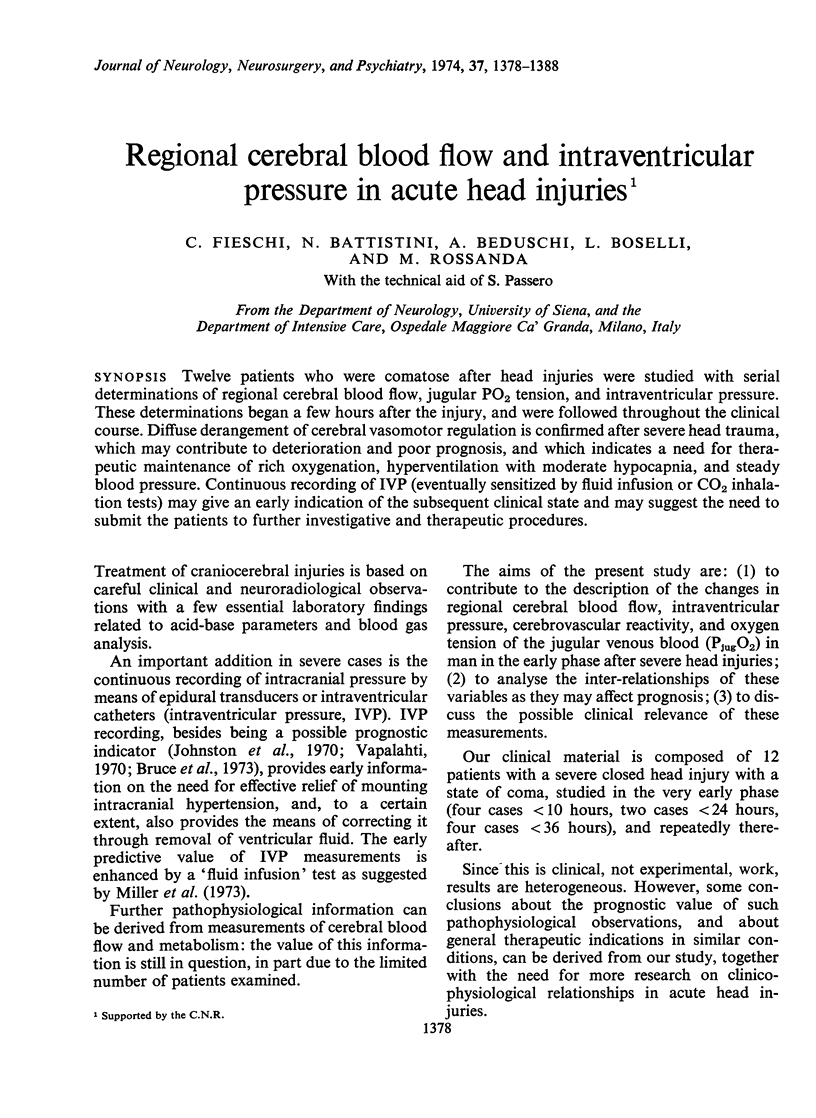
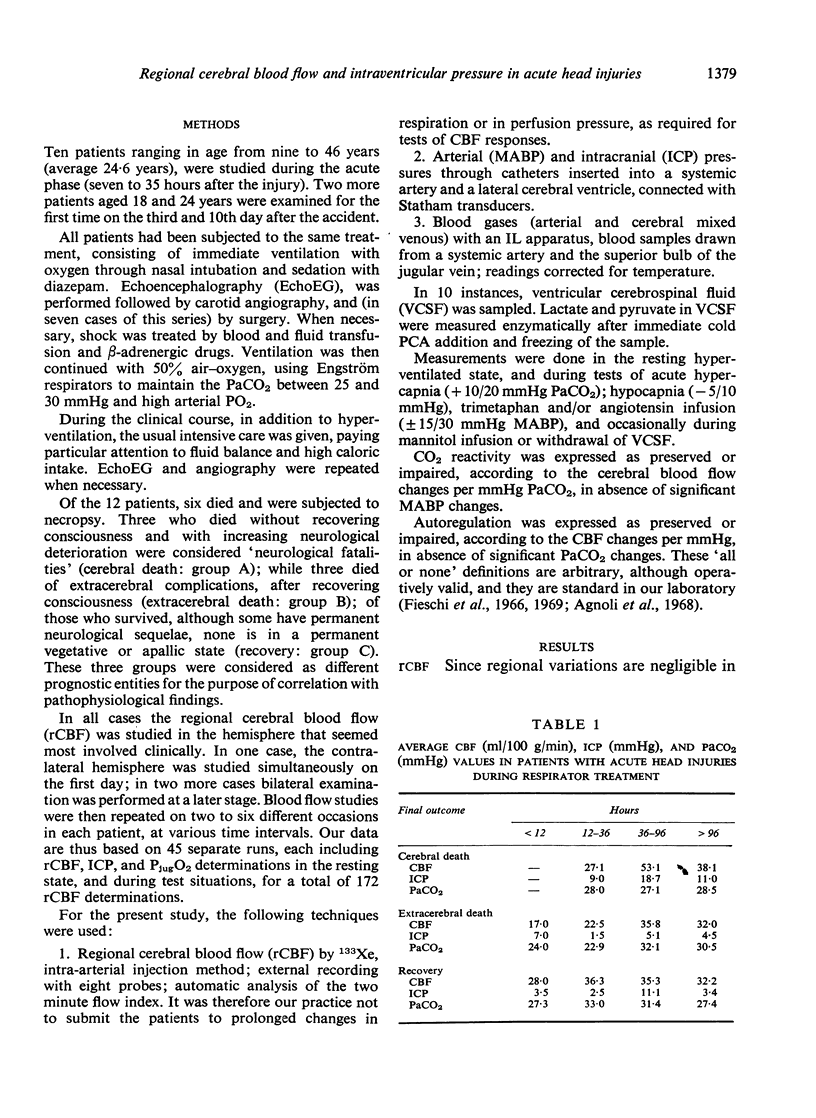
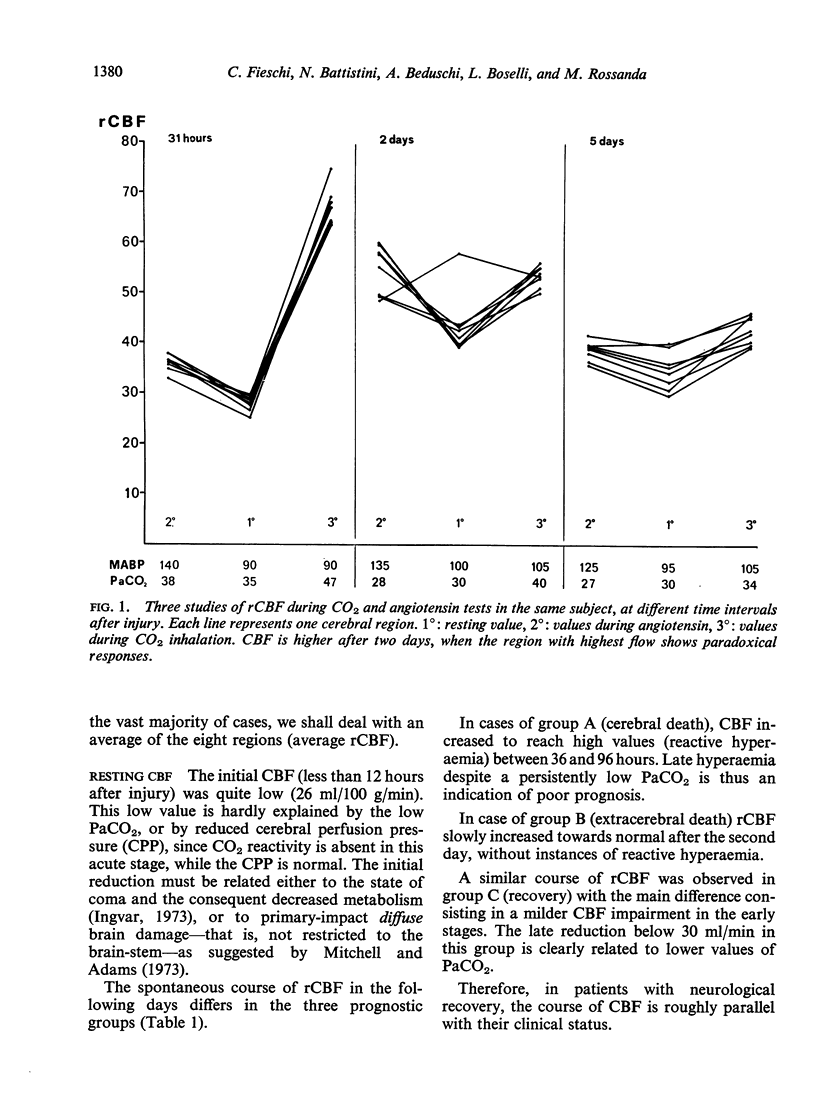
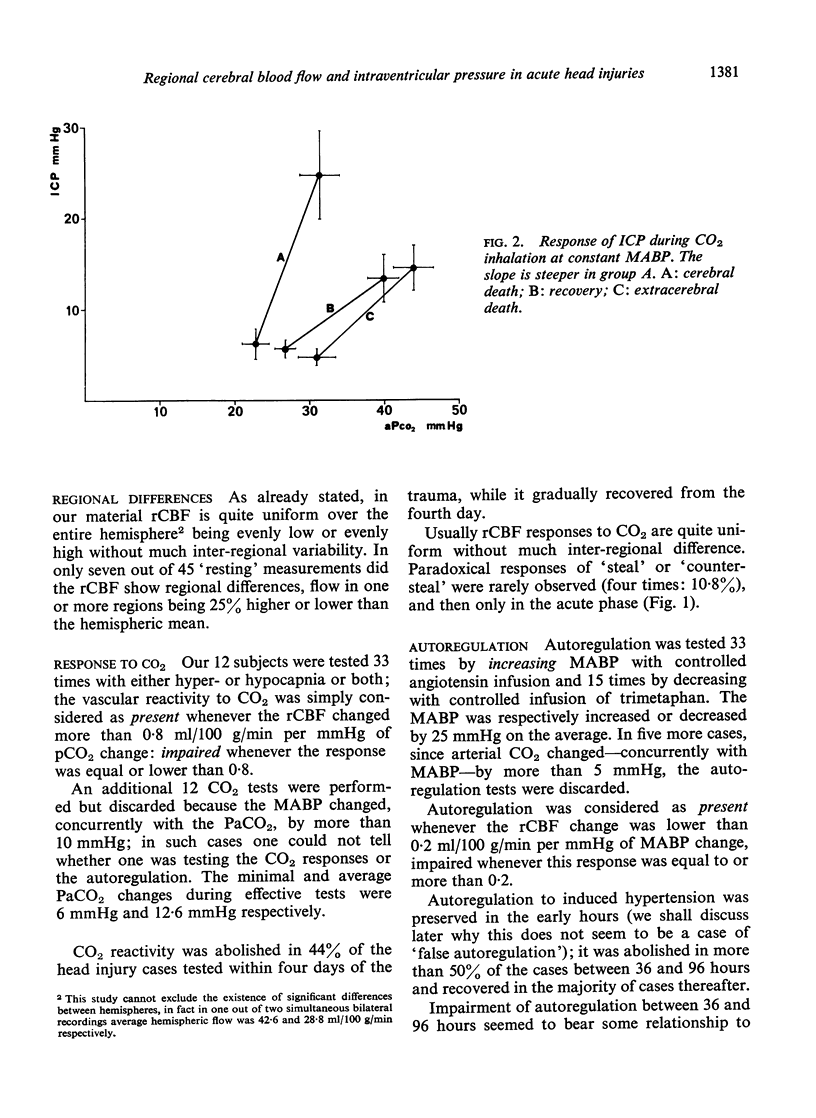

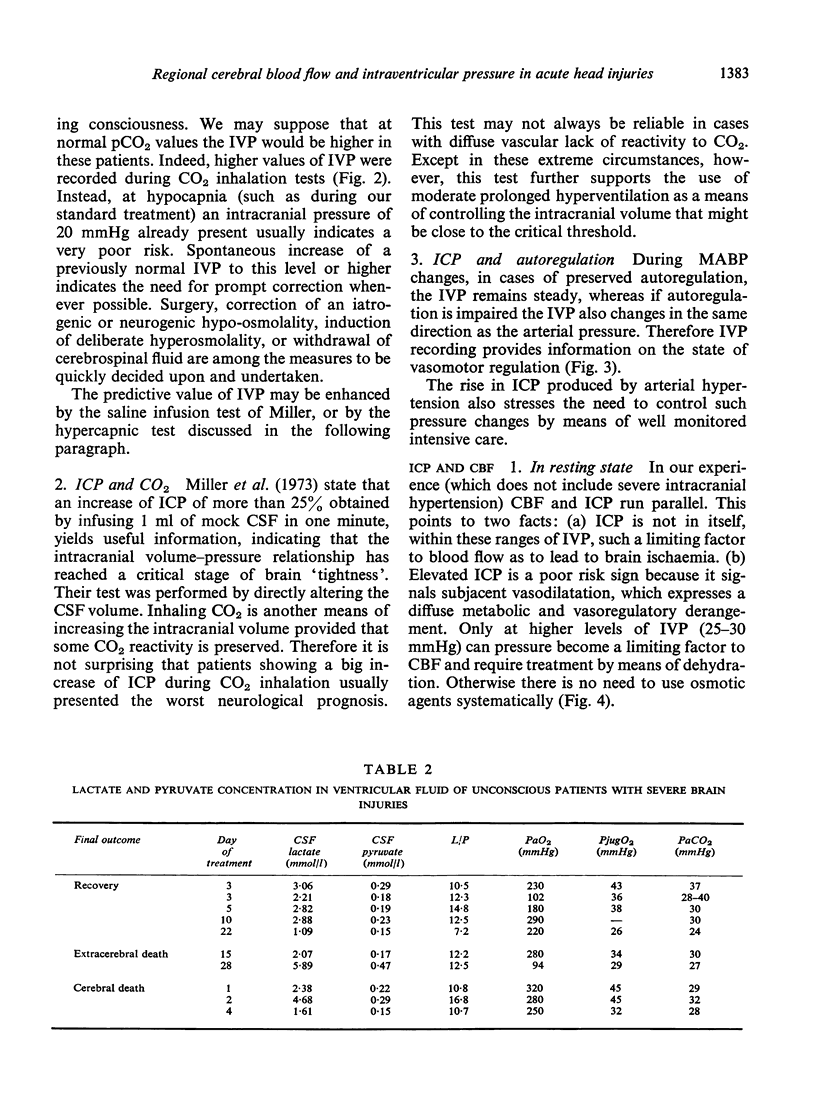
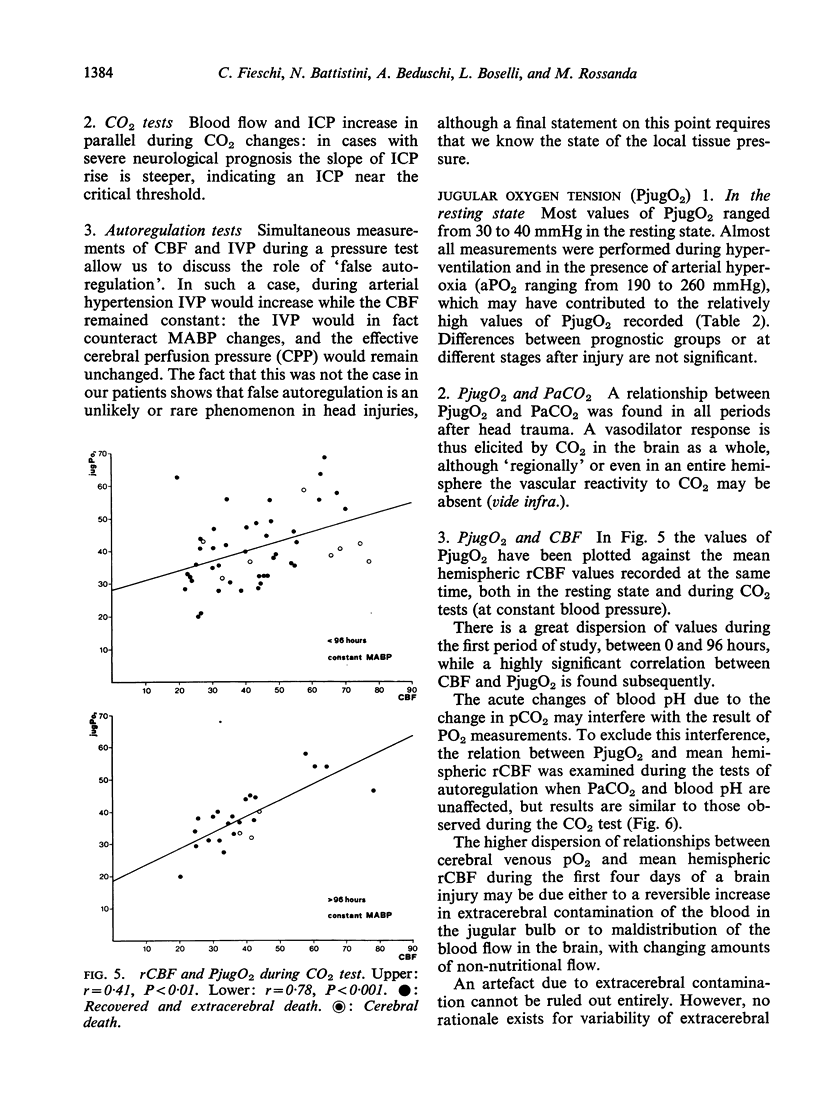
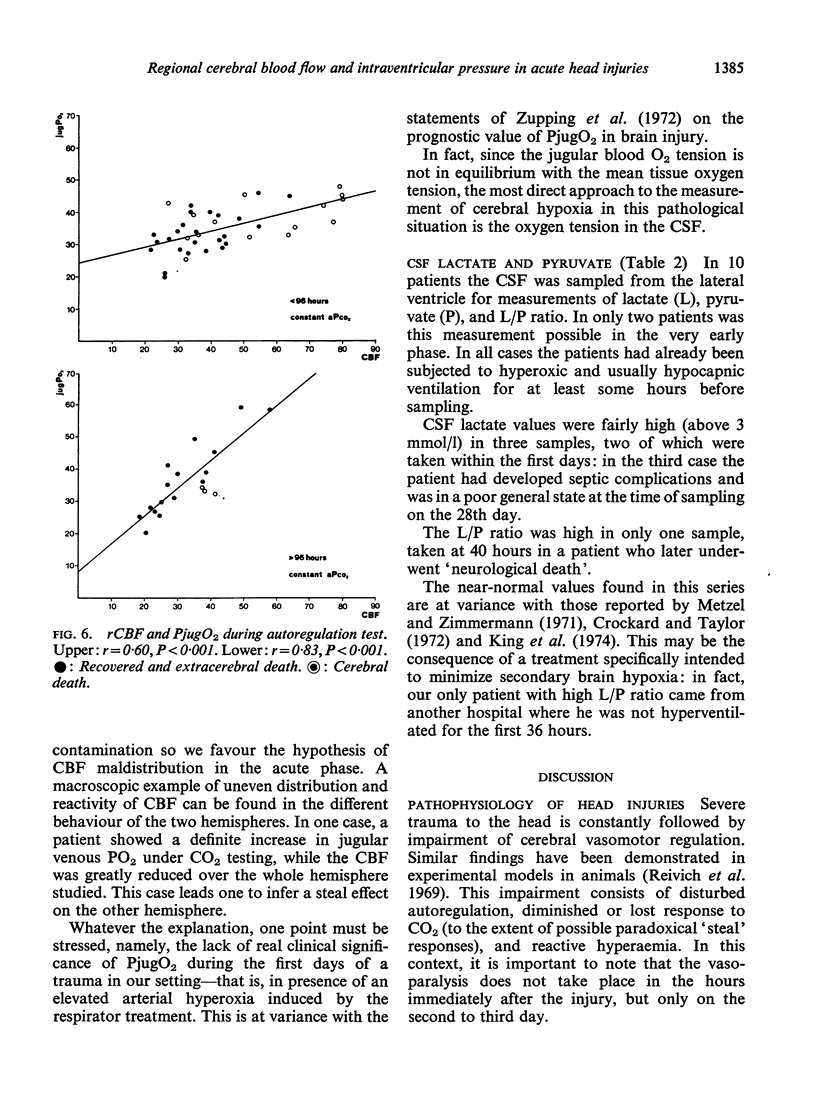
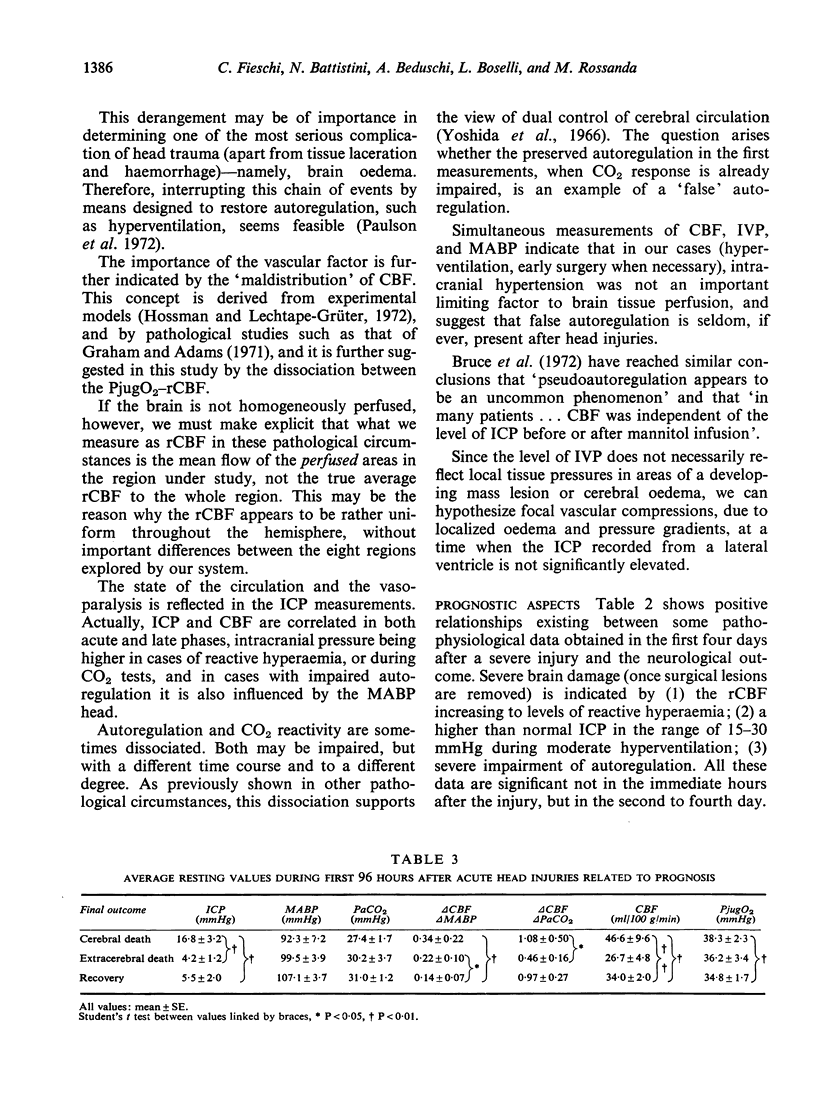
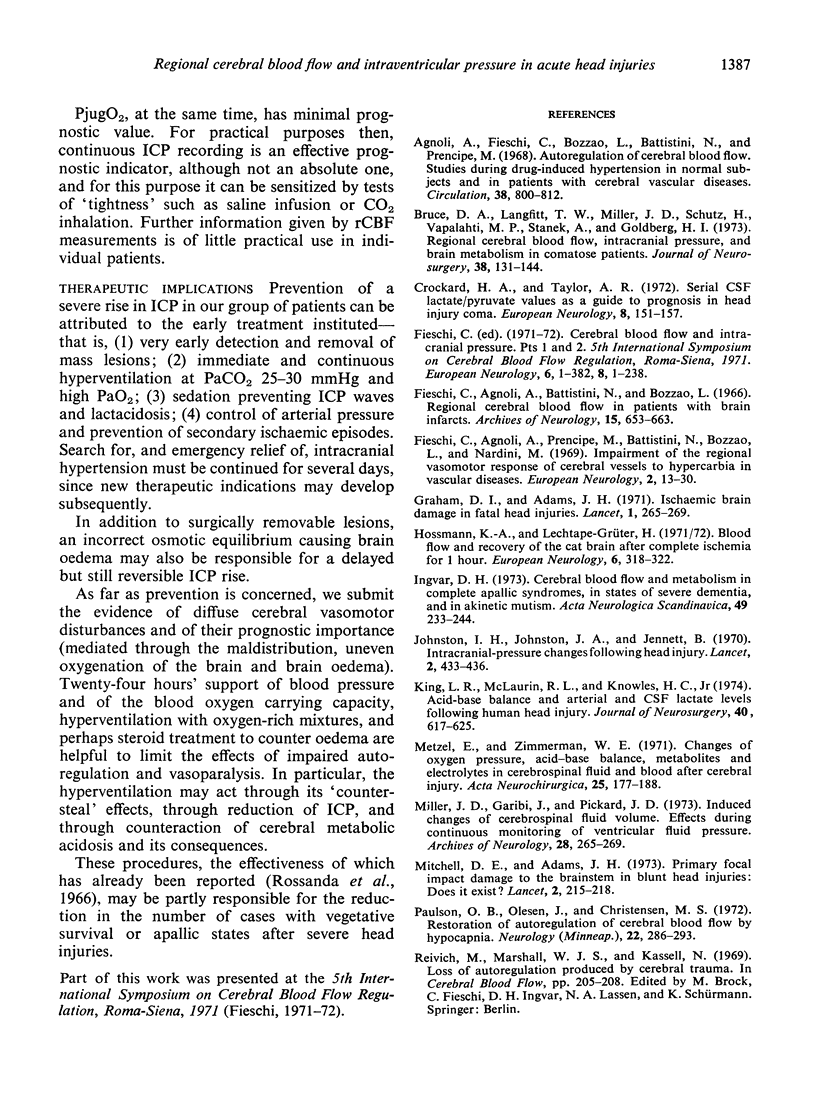
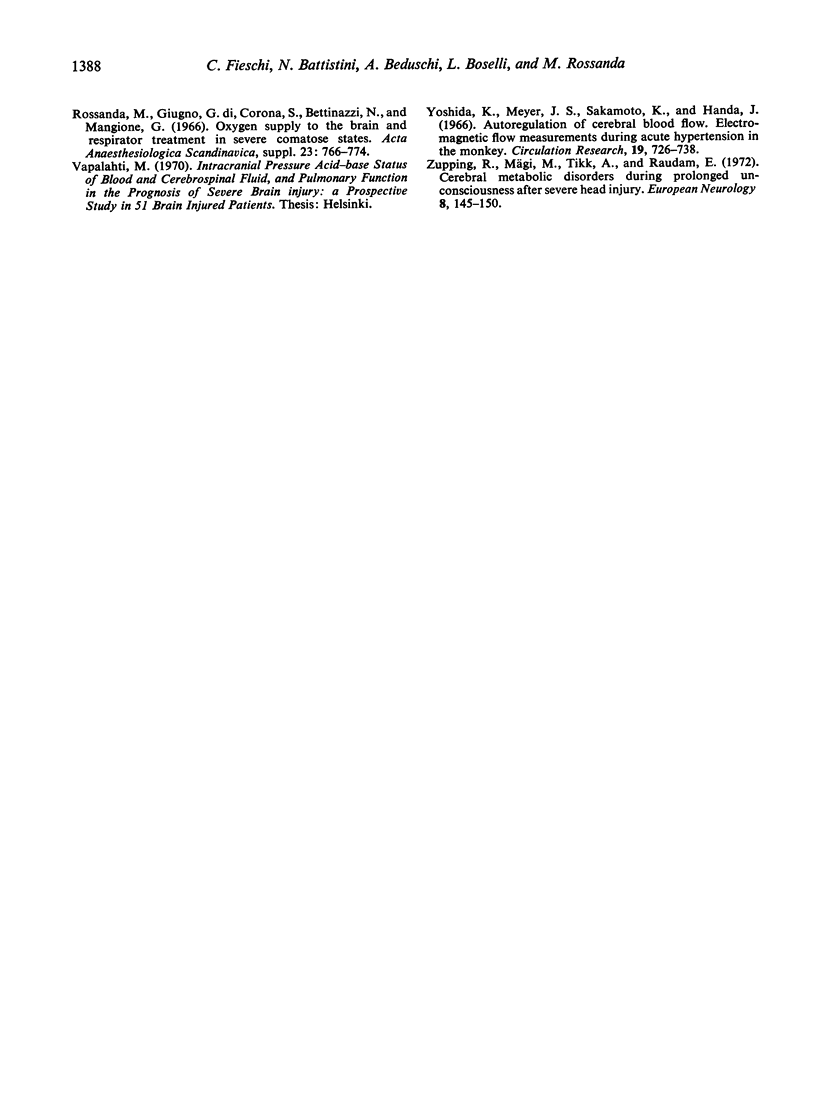
Selected References
These references are in PubMed. This may not be the complete list of references from this article.
- Agnoli A., Fieschi C., Bozzao L., Battistini N., Prencipe M. Autoregulation of cerebral blood flow. Studies during drug-induced hypertension in normal subjects and in patients with cerebral vascular diseases. Circulation. 1968 Oct;38(4):800–812. doi: 10.1161/01.cir.38.4.800. [DOI] [PubMed] [Google Scholar]
- Bruce D. A., Langfitt T. W., Miller J. D., Schutz H., Vapalahti M. P., Stanek A., Goldberg H. I. Regional cerebral blood flow, intracranial pressure, and brain metabolism in comatose patients. J Neurosurg. 1973 Feb;38(2):131–144. doi: 10.3171/jns.1973.38.2.0131. [DOI] [PubMed] [Google Scholar]
- Crockard H. A., Taylor A. R. Serial CSF lactate-pyruvate values as a guide to prognosis in head injury coma. Eur Neurol. 1972;8(1):151–157. doi: 10.1159/000114569. [DOI] [PubMed] [Google Scholar]
- Fieschi C., Agnoli A., Battistini N., Bozzao L. Regional cerebral blood flow in patients with brain infarcts. A study with the 85Kr clearance technique. Arch Neurol. 1966 Dec;15(6):653–663. doi: 10.1001/archneur.1966.00470180093011. [DOI] [PubMed] [Google Scholar]
- Fieschi C., Agnoli A., Prencipe M., Battistini N., Bozzao L., Nardini M. Impairment of the regional vasomotor response of cerebral vessels to hypercarbia in vascular diseases. Eur Neurol. 1969;2(1):13–30. doi: 10.1159/000113770. [DOI] [PubMed] [Google Scholar]
- Graham D. I., Adams J. H. Ischaemic brain damage in fatal head injuries. Lancet. 1971 Feb 6;1(7693):265–266. doi: 10.1016/s0140-6736(71)91003-8. [DOI] [PubMed] [Google Scholar]
- Hossmann K. A., Lechtape-Grüter H. Blood flow and recovery of the cat brain after complete ischemia for 1 hour. Eur Neurol. 1971;6(1):318–322. doi: 10.1159/000114515. [DOI] [PubMed] [Google Scholar]
- Ingvar D. H. Cerebral blood flow and metabolism in complete apallic syndromes, in states of severe dementia, and in akinetic mutism. Acta Neurol Scand. 1973;49(2):233–244. doi: 10.1111/j.1600-0404.1973.tb01295.x. [DOI] [PubMed] [Google Scholar]
- Johnston I. H., Johnston J. A., Jennett B. Intracranial-pressure changes following head injury. Lancet. 1970 Aug 29;2(7670):433–436. doi: 10.1016/s0140-6736(70)90054-1. [DOI] [PubMed] [Google Scholar]
- King L. R., McLaurin R. L., Knowles H. C., Jr Acid-base balance and arterial and CSF lactate levels following human head injury. J Neurosurg. 1974 May;40(5):617–625. doi: 10.3171/jns.1974.40.5.0617. [DOI] [PubMed] [Google Scholar]
- Metzel E., Zimmermann W. E. Changes of oxygen pressure, acid-base balance, metabolites and electrolytes in cerebrospinal fluid and blood after cerebral injury. Acta Neurochir (Wien) 1971;25(3):177–188. doi: 10.1007/BF01809099. [DOI] [PubMed] [Google Scholar]
- Miller J. D., Garibi J., Pickard J. D. Induced changes of cerebrospinal fluid volume. Effects during continuous monitoring of ventricular fluid pressure. Arch Neurol. 1973 Apr;28(4):265–269. doi: 10.1001/archneur.1973.00490220073011. [DOI] [PubMed] [Google Scholar]
- Mitchell D. E., Adams J. H. Primary focal impact damage to the brainstem in blunt head injuries. Does it exist? Lancet. 1973 Aug 4;2(7823):215–218. doi: 10.1016/s0140-6736(73)93128-0. [DOI] [PubMed] [Google Scholar]
- Paulson O. B., Olesen J., Christensen M. S. Restoration of autoregulation of cerebral blood flow by hypocapnia. Neurology. 1972 Mar;22(3):286–293. doi: 10.1212/wnl.22.3.286. [DOI] [PubMed] [Google Scholar]
- Rossanda M., Di Giugno G., Corona S., Bettinazzi N., Mangione G. Oxygen supply to the brain and respirator treatment in severe comatose states. Acta Anaesthesiol Scand Suppl. 1966;23:766–774. doi: 10.1111/j.1399-6576.1966.tb01093.x. [DOI] [PubMed] [Google Scholar]
- Yoshida K., Meyer J. S., Sakamoto K., Handa J. Autoregulation of cerebral blood flow. Electromagnetic flow measurements during acute hypertension in the monkey. Circ Res. 1966 Oct;19(4):726–738. doi: 10.1161/01.res.19.4.726. [DOI] [PubMed] [Google Scholar]
- Zupping R., Mägi M., Tikk A., Raudam E. Cerebral metabolic disorders during prolonged unconsciousness after severe head injury. Eur Neurol. 1972;8(1):145–150. doi: 10.1159/000114568. [DOI] [PubMed] [Google Scholar]


